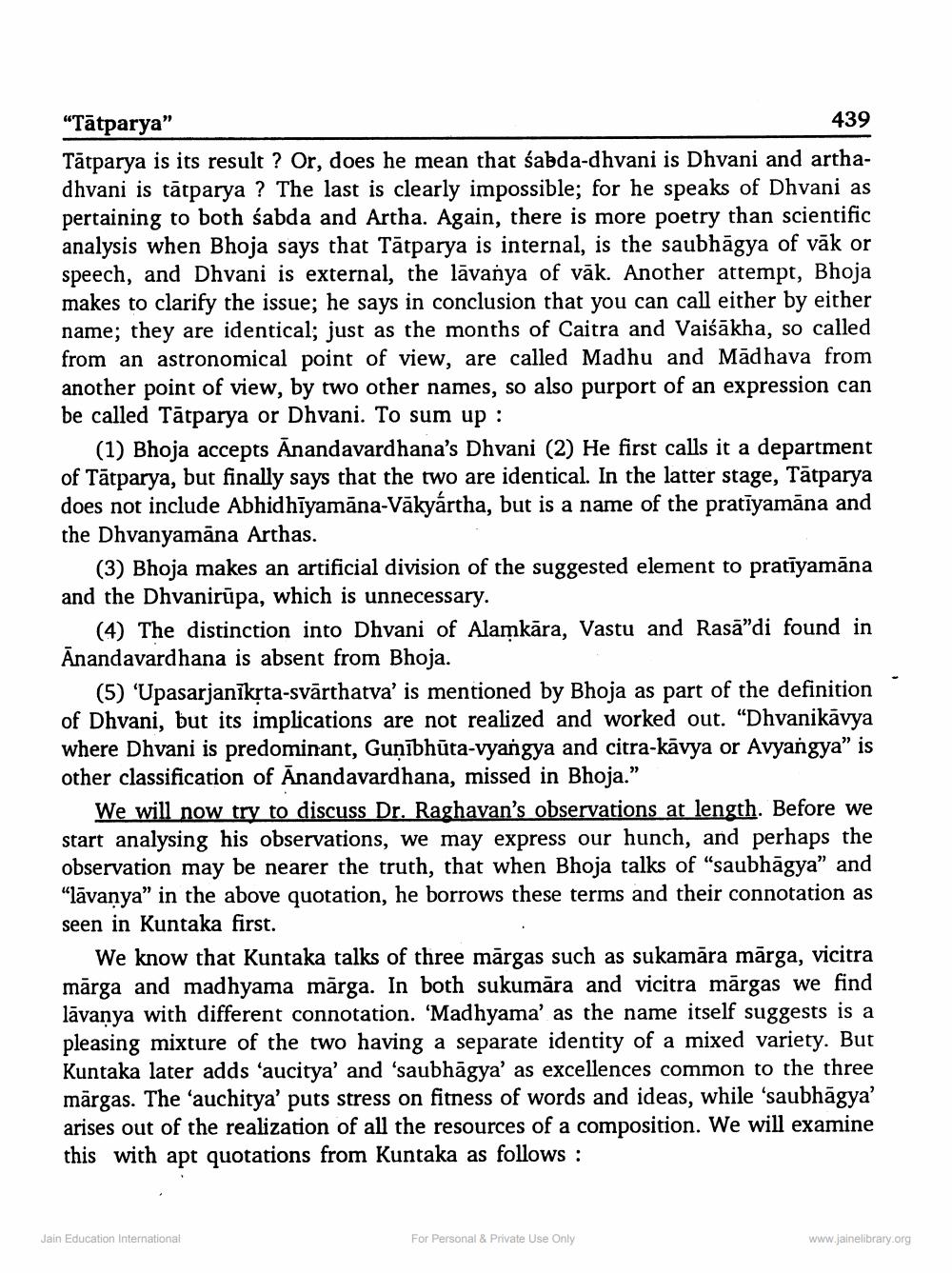________________
"Tātparya"
439 Tātparya is its result ? Or, does he mean that sabda-dhvani is Dhvani and arthadhvani is tātparya ? The last is clearly impossible; for he speaks of Dhvani as pertaining to both sabda and Artha. Again, there is more poetry than scientific analysis when Bhoja says that Tātparya is internal, is the saubhāgya of vāk or speech, and Dhvani is external, the lāvanya of vāk. Another attempt, Bhoja makes to clarify the issue; he says in conclusion that you can call either by either name; they are identical; just as the months of Caitra and Vaišākha, so called from an astronomical point of view, are called Madhu and Madhava from another point of view, by two other names, so also purport of an expression can be called Tātparya or Dhvani. To sum up :
(1) Bhoja accepts Anandavardhana's Dhvani (2) He first calls it a department of Tātparya, but finally says that the two are identical. In the latter stage, Tātparya does not include Abhidhīyamāna-Väkyártha, but is a name of the pratīyamāna and the Dhvanyamāna Arthas.
(3) Bhoja makes an artificial division of the suggested element to pratīyamāna and the Dhvanirūpa, which is unnecessary.
(4) The distinction into Dhvani of Alamkāra, Vastu and Rasā"di found in Anandavardhana is absent from Bhoja.
(5) 'Upasarjanīkrta-svārtharva' is mentioned by Bhoja as part of the definition of Dhvani, but its implications are not realized and worked out. "Dhvanikavya where Dhvani is predominant, Gunībhūta-vyangya and citra-kavya or Avyangya" is other classification of Anandavardhana, missed in Bhoja."
We will now try to discuss Dr. Raghavan's observations at length. Before we start analysing his observations, we may express our hunch, and perhaps the observation may be nearer the truth, that when Bhoja talks of "saubhāgya” and "lāvanya" in the above quotation, he borrows these terms and their connotation as seen in Kuntaka first.
We know that Kuntaka talks of three mārgas such as sukamāra mārga, vicitra mārga and madhyama mārga. In both sukumāra and vicitra mārgas we find lāvanya with different connotation. 'Madhyama' as the name itself suggests is a pleasing mixture of the two having a separate identity of a mixed variety. But Kuntaka later adds 'aucitya' and 'saubhāgya' as excellences common to the three märgas. The 'auchitya' puts stress on fitness of words and ideas, while 'saubhāgya' arises out of the realization of all the resources of a composition. We will examine this with apt quotations from Kuntaka as follows:
a.
Jain Education International
For Personal & Private Use Only
www.jainelibrary.org




